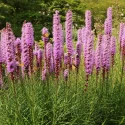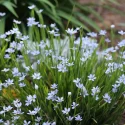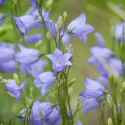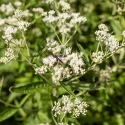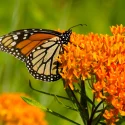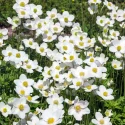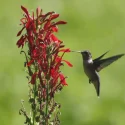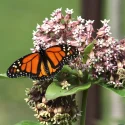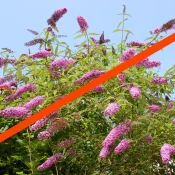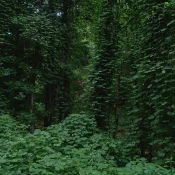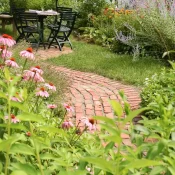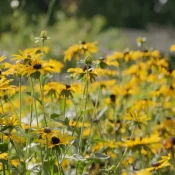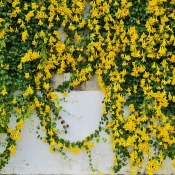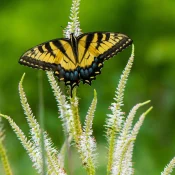What is an invasive plant?
An invasive plant is a non-native plant that is so successful at growing and reproducing, it quickly takes over space and nutrients from native plants. Invasive plants can quickly choke out native wildlife. Remove invasive plants when you can.
Invasive vs. Non-Native
Not all non-native plants are invasive. In order to be invasive, the plant need to be able to thrive in an area’s climate and spread quickly.
Petunias are native to Africa, but nurseries sell these non-native plants every spring. A gardener in Connecticut can plant petunias in the spring and not fear they will spread and take over New England—the non-native plant cannot survive the frost.
Who decides when a plant becomes invasive?
Local government agencies have responsibility for deciding when a non-native plant becomes invasive. Some states ban the sale of invasive plants, however it is mostly up to plant nurseries to be aware and stock accordingly. Any invasive plants that are already planted are up to the homeowner or community to remove.
Invasive Plant Examples
Kudzu is an invasive plant.
Although kudzu was brought to the US from Japan relatively recently (1876), it has completely exploded and taken over most of the mid-Atlantic and southern United States. Kudzu grows so quickly because the climates in these areas are similar to kudzu’s native habitat in Japan. Kudzu can even overtake an entire forest, climbing over native bushes and trees to slowly kill native plant life. Kudzu can change the structure of forest entirely.
Porcelain Berry is an invasive plant.
Porcelain Berry is seen throughout the mid-Atlantic states and due to climate change, appears in the Northeast, too. Its vines can grow over 25 feet long, cutting off sunlight to plants underneath them. Porcelain Berry was brought over from Asia for landscaping in the 19th century. Although the berries are a beautiful blue, they are not a good food and nutrient source for local birds. The root system is very difficult to remove entirely; sometimes cutting it back is the best you can do.
Remove invasive plants when you can
Invasive plants should be removed from your garden or community’s landscaping—it is that simple. Get your garden gloves, some contractor trash bags (invasive plants should always be thrown out, not composted), and remove all invasive plants when you can.
Unfortunately, chemical treatments (weed killers, liquid plant killers) are not only harmful, they are rarely effective. Invasive plants must be taken out by the root to be removed entirely.
Invasive plants: committing to a lifetime battle
Sadly, removing all invasive plants is not possible. Invasive plants have a 500-year head start—some were brought to the Americas when European settlers appeared hundreds of years ago. Invasive plant seeds spread so quickly and are relentlessly successful at germinating. There is simply no way to remove them all.
Commit to a lifetime of vigilance and identification at a scale that’s manageable. There are hundreds of invasive species—it’s overwhelming to tackle it all. Instead, find a manageable way to do your part:
- Identify five invasive species that are present throughout your community
- Find out how they spread: through seed? Through roots?
- Get good at identification: what do they look like when small? In different seasons?
- Learn how to properly remove them from a local, trusted gardener
- Remove invasive plants when you can
- Spread the word about invasive plants in your community (how to spot and remove them, why they are harmful to wildlife)
- Repeat for the rest of our lives
A story of vigilance
English Ivy is one of the invasive plants I’ve decided to focus on removing. It is everywhere in my suburban Pennsylvania community. I can understand why landscapers and homeowners like it: it quickly covers large areas, is evergreen, and requires minimal work to maintain. But it spreads so quickly, it can overtake a yard and start climbing up trees in just a few years.
What I’ve done at home
What I’ve done in my community
English Ivy is all over my neighborhood. I have gotten to know some neighbors and mentioned why (and how) we removed the ivy. Three other neighbors have removed the ivy from their properties since. But it’s still seemingly everywhere.
I sometimes see English Ivy sold at local plant nurseries. I’ve found success writing a thoughtful, researched email to the business with links to trusted, government sources, asking for them to no longer carry invasive species.
